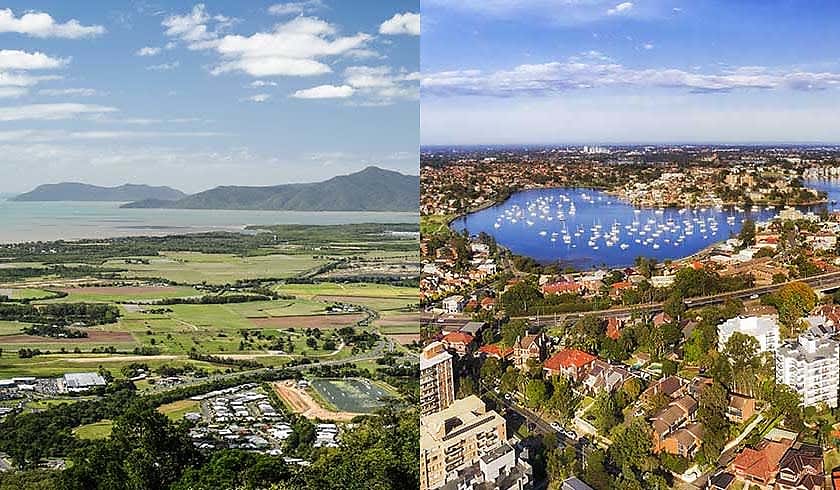Capital city growth in the red, QLD and WA in flux: data shows
Recent housing data has indicated that home values in capital cities dropped in the three months leading up to January, with some regional markets in Queensland and Western Australia “losing steam”.

According to CoreLogic’s latest Regional Market Update, regional housing markets in Australia continue to show resilience.
CoreLogic revealed that regional property values rose 1 per cent over the three months to January, outperforming the -0.7 per cent decline in capital city values.
While growth in regional markets has stabilised, the data showed that shifting patterns suggest a slowdown in some areas.
Western Australia and Queensland led the country’s largest 50 regional significant urban areas in value gains.
CoreLogic recorded that the strongest growth of the quarter was in Geraldton (6.3 per cent), Albany (5.9 per cent), Mackay (5.7 per cent), Townsville (5.1 per cent), and Gladstone (4.3 per cent).
However, the data indicated that momentum is slowing in several of these markets, including 10 out of 11 Queensland markets and three out of four Western Australian markets.
Gladstone’s quarterly growth rate dropped significantly from the 9.9 per cent rise in July 2024, while Geraldton’s three-month growth rate declined by 2.6 percentage points from its August peak.
CoreLogic’s economist and report author, Kaytlin Ezzy, said the moderation will continue as affordability concerns dampen demand.
“Queensland and Western Australia markets have driven regional growth for more than a year, however, they are now clearly losing steam,” she said.
“The historically affordable mining markets of Gladstone, Townsville, Mackay and Geraldton, and the coastal markets of Busselton and Bunbury, have all seen significant growth over the past year, adding between $100,000 and $140,000 their respective medians.”
She noted that while these markets remain strong, the slowdown in quarterly growth suggested that peak conditions may have passed.
Meanwhile, other regional markets are showing revitalised strength.
In NSW, Bathurst recorded the sharpest change in direction, shifting from a -1.8 per cent decline in October to a 4.2 per cent rise in January.
Taree, Warragul-Drouin, and Ballarat also revealed signs of stabilisation or modest growth.
CoreLogic marked Ballina as the weakest performer over the quarter, down -2.8 per cent, while Ballarat saw the largest annual drop with values falling -4.9 per cent over 12 months to January.
Ezzy highlighted that regional Victoria and southern parts of NSW were among the worst market performers in 2024.
“However, they have arguably gained somewhat of an affordability advantage over that time,” she noted.
“We could be seeing the first green shoots in these markets, if growth conditions continue to improve.”
Regional markets showed renewed momentum in January, with rents increasing by 1.6 per cent over the quarter, compared to a 0.3 per cent rise in capital cities.
While up from Q3 2024’s recent low of 0.4 per cent, CoreLogic indicated that the increase in the quarterly rental trend is largely seasonal, with the broader annual trend in rental growth sustaining moderation at 5.9 per cent.
Busselton recorded the highest quarterly rental growth at 4.6 per cent, while Geraldton led the annual performance with rents reaching 13.8 per cent, adding $64 per week to median rental values.
Ezzy noted that regional vacancy rates remain tight at 1.9 per cent, slightly down from 2 per cent a year ago.
Warrnambool had the lowest vacancy rate at just 0.3 per cent, while Dubbo and Bowral-Mittagong had the highest at 3.9 per cent and 3.3 per cent, respectively.
